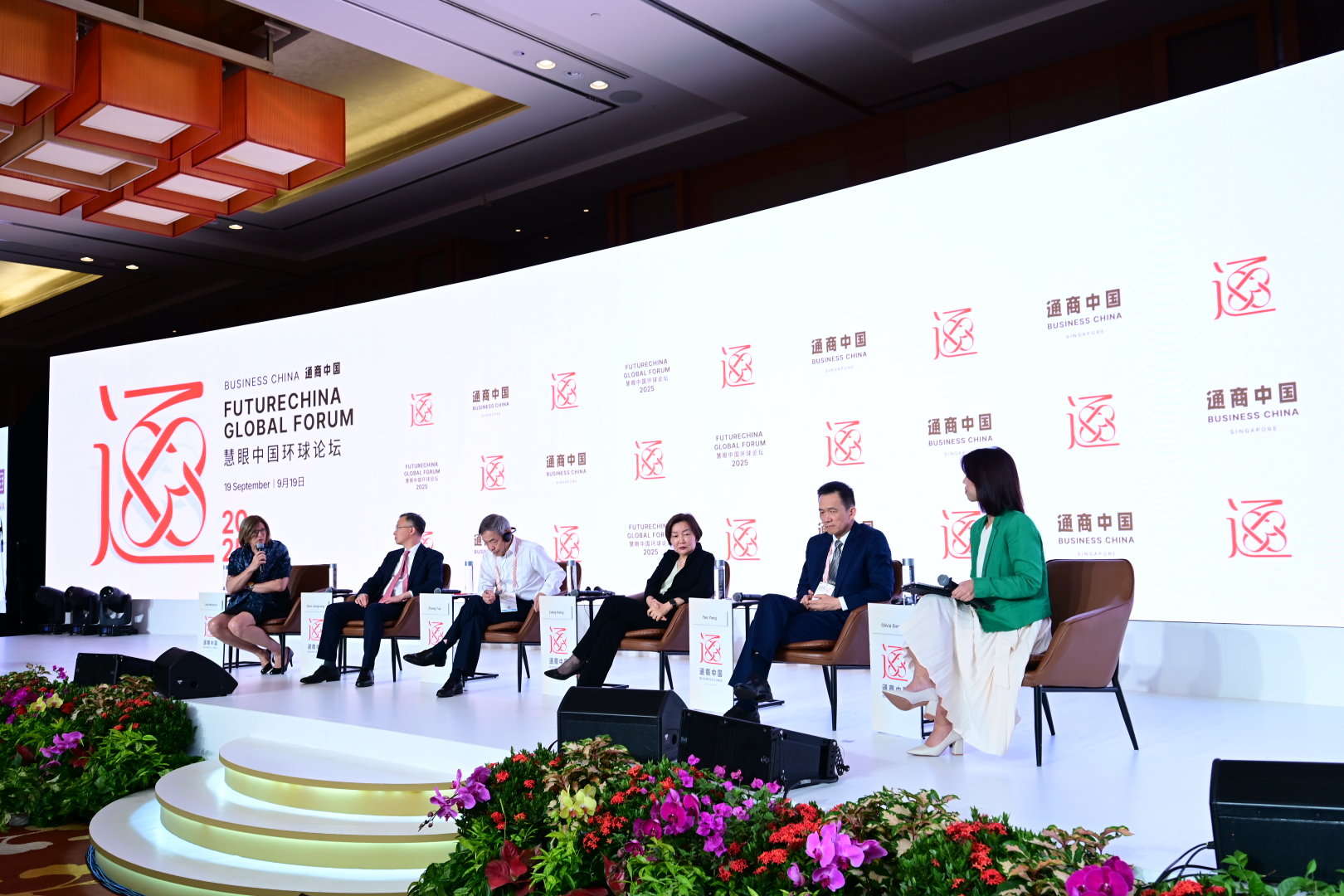FutureChina Global Forum 2025
The World in Flux – Challenges and Opportunities
Panel 3: China’s Policy, Economic Transformation and Industrial Development
Executive Summary
The panel on China’s economic transformation expressed cautious optimism, concluding that the country’s future hinges on a decisive shift from stimulus-led recovery to sustainable, innovation-driven growth. The consensus was that overcoming domestic “involution” and navigating a new geopolitical landscape requires a deep commitment to original innovation in key sectors like EVs and semiconductors. This technological focus is the only viable path to boosting productivity, creating higher-value jobs, and sustainably unlocking the consumer market through earned income. Consequently, the true measure of China’s economic health lies in fundamental indicators like R&D investment and productivity, rather than short-term GDP figures.
- Cautious Optimism Amid Stimulus Debates
The panel conveyed a sense of cautious optimism regarding China’s economic trajectory, underscored by a significant debate on the necessity and impact of further government stimulus.
- The overall sentiment was that China is past the worst of its recent downturn, with optimism scores ranging from a neutral 5 to a bullish 8.8 on a 10-point scale. However, there was a clear division on the effectiveness of consumer stimulus; some panelists argued it was a vital and ongoing need, while others believed its macroeconomic impact was limited and that it merely front-loaded future demand.
- The discussion highlighted a disconnect between current macroeconomic data and the buoyant stock market. This was reconciled by the view that equity markets are forward-looking, pricing in a future driven by innovation and geopolitical shifts rather than reacting to current data or short-term stimulus.
- A critical underlying trend is that Chinese households are actively repairing their balance sheets. This is evidenced by a massive accumulation of savings, which is tempering current spending but also creating a significant reservoir of potential consumer demand for the future.
- Innovation as the Undisputed Growth Engine
A powerful consensus emerged among panelists and the audience that original, high-value innovation has replaced traditional growth drivers as the central engine for China’s future economic success, global competitiveness, and ability to overcome domestic challenges.
- Innovation was framed as the primary solution to “involution” (内卷)—the state of hyper-competition that erodes profit margins. Panelists argued that the only sustainable path forward is to invest heavily in original R&D to create unique value and move up the global value chain instead of competing on price.
- The “DeepSeek moment” was cited as a recent catalyst that reminded investors of the dynamism of China’s private sector. Key growth areas highlighted include electric vehicles (EVs), where China has become a world leader, alongside AI, robotics, and advanced materials.
- However, panelists identified a critical “chokehold” in the domestic semiconductor industry. Progress in this area is seen as essential to unlocking the full potential of the broader tech ecosystem and ensuring long-term technological sovereignty.
- Navigating a New Era of Geopolitics and Trade
The panel analysed the shifting global trade landscape, concluding that businesses must adapt to a permanent new reality of strategic US-China competition and reconfigured global supply chains.
- The US-China relationship is seen as entering a phase of stabilisation, not decoupling. The friction was described as a structural issue stemming from America “having a hard time being number two,” which will lead to a managed, albeit persistent, competition.
- Paradoxically, recent US tariffs on other Asian nations were seen as having narrowed the tariff gap with China. This has unintentionally leveled the playing field and could provide an unexpected tailwind for Chinese exports, whose resilience has been underestimated.
- China’s intensely competitive domestic market was described as the “world’s fitness center.” Companies that survive and thrive there are forged into highly efficient and innovative organisations, making them formidable competitors on the global stage.
- Future Indicators and Long-Term Resilience
To accurately gauge the economy’s direction, the panel advised looking beyond headline numbers to fundamental indicators of innovation and policy, while viewing long-term challenges like demographics through the lens of technological adaptation.
- Instead of focusing solely on GDP, the panelists suggested a dashboard of key indicators to watch: the proportion of revenue invested in R&D, productivity gains (value-added per worker), price levels (CPI and housing), household savings rates, and the strategic direction set by the upcoming 15th Five-Year Plan.
- The long-term challenge of an aging population was viewed not as an insurmountable crisis but as a powerful catalyst for automation. AI and robotics are expected to fill labor gaps by replacing undesirable manual jobs, thereby boosting overall national productivity.
- Ultimately, the panel concluded that sustainable consumption cannot be built on subsidies but must come from earned income. Therefore, the entire economic model hinges on using innovation to create higher value-added jobs, which in turn will raise incomes and unlock the full power of China’s consumer market.

